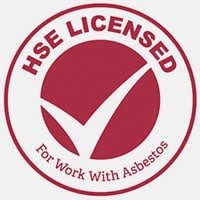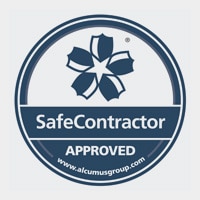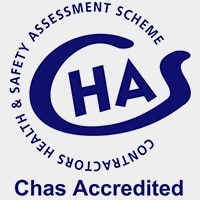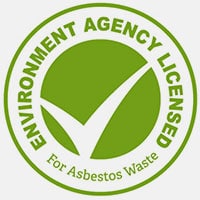History of Asbestos Law & Regulations
Find out about asbestos, what is is and why it is a hazardous material.To better understand today’s current asbestos laws and regulations it is essential to look at the history of these regulations, how they have changed, how they were implemented and why. This page gives an overview of the historical changes that have been made and finishes with a timeline graph which gives a visual representation of when the regulations were in force. Only direct asbestos industry regulations have been included, however it is worth noting that there have been several sets of regulations which have specifically included asbestos, however were not direct asbestos legislation and have not been mentioned on this page.
For current law and regulations see our Asbestos Law page.
For general asbestos history see our History of asbestos page.
The Emergence of Asbestosis 1900
The first cases of asbestosis were noted as early as 1900. In 1924, an English doctor performed a post-mortem examination on the body of a deceased 33 year-old woman who had worked in an asbestos textile factory, where she had worked for 13 years. The post-mortem revealed extensive lung damage, which was linked to her occupation. The term “asbestosis” first started to be used after the report was published in 1927.
The Factory and Workshop Act 1901
Section 79 of the 1901 Act fell within part IV of the Act headed “Dangerous and Unhealthy Industries”. It provided as follows: “Any manufacture, machinery, plant, process or description of manual labour, used in factories or workshops that is dangerous or injurious to health“. The asbestos Industry Regulations 1931 were made under this section of the Act. The Act was amended and changed in various forms until the introduction of the Health & Safety at Work Act 1974.
The Merewether and Price Report 1930
As a result of the above, the UK government commissioned Merewether and Price to investigate and report on the state of health of individuals working with asbestos (As seen in the video ‘Asbestos’). Their resultant report was published in 1930 and is widely acknowledged to be a turning point in the development of medical knowledge about asbestos. The report showed that chronic exposure to high concentrations of asbestos could lead to asbestosis. Subsequently, the 1931 asbestos Industry Regulations were published, these coming into force on 1 March 1932. The general thrust of the 1931 Regulations was directed towards the asbestos manufacturing industries. However, Merewether and Price did recognise that other users of asbestos products, such as laggers and shipbuilders, were heavily exposed to asbestos dust and could be at risk.
The Asbestos Industry Regulations 1931
The Asbestos Industry Regulations 1931, covered the main asbestos manufacturing processes. These were crushing, spinning, and weaving and the manufacture of leading products. Exhaust ventilation was to be applied for these jobs, in order to prevent ‘the escape of Asbestos dust into the air of any room in which persons work’.
Some processes, such as hand weaving or blending and mattress-making, were singled out for special attention. Workshops were to be kept clean and adequately lit and impermeable sacks were to be introduced. Overalls and masks were to be used for the dustiest operations and some attempt was made to protect bystanders and young workers. Although these regulations governed the British asbestos industry from 1931 until 1970, they failed to prevent the deaths of thousands of British workers from asbestos-related diseases.
The main flaw in the 1931 regulations was that they were industry specific. The fact that these regulations did not apply outside the asbestos industry prolonged the period during which insulators, plumbers, boilermakers, shipyard workers and others were exposed to asbestos.
The introduction of The Factories Act 1961, would see these regulations updated during 1969.
The First Successful Personal Injury Claim 1967
Personal injury compensation claims for UK victims of negligent exposure to asbestos became increasingly possible after 1971, when the Court of Appeal decided the first such case. The writ had been issued in 1967. This case paved the way for subsequent asbestosis claims, claims and pleural plaques claims for compensation in the UK. The issuing of the above writ led to a good deal of publicity, one of the effects of which was the issuing of the Asbestos Regulations 1969, which came into effect on 14 May 1970.
The Asbestos Regulations 1969
The Asbestos Regulations 1969, (came into force may 1970) were made under The Factories Act 1961 and aimed to give the first quantitive control levels of exposure to asbestos in workplaces. The removal of the word Industry signifies the aim to regulate asbestos beyond the restricted 1931 regulations coverage of asbestos manufacturing processes.
The Asbestos Regulations (1969) revoked the 1931 regulations and expanded the statutory duty of employers to ensure that all staff in factories, power stations, warehouses, institutions and other premises were protected from the dangers of working with asbestos. The 1969 regulations applied to every process which used either asbestos or any article that contained asbestos and sought to minimise exposure to asbestos dust through the use of exhaust ventilation, protective equipment and clothing, the cleaning at regular intervals of machinery, plants and interior surfaces by dustless methods and the introduction of improved handling procedures.
Despite the introduction of these controls, the occurrence of asbestos-related occupational disease amongst those working in the premises covered by the 1969 regulations was not eliminated.
The Voluntary Asbestos Import Ban 1970
From 1970 the asbestos industry maintained a voluntary ban on the import into the UK of raw blue asbestos. The reasons the industry volunteered a ban on blue asbestos are not hard to identify. The evidence of the dangers of asbestos mounted as its use increased. Blaming blue asbestos was a tactically useful ploy.
At the time of the ban, blue asbestos represented about 3% of total world production and it was mined only in South Africa, by Eternit and General Mining & Finance Corp, not by the UK-based Turner and Newall. Banning only blue asbestos made very little difference to the world trade in asbestos. The bans did not cover the import of products.
The Health & Safety at Work Act 1974
The Health & Safety at Work Act 1974, requires employers to conduct their work in such a way that their employees will not be exposed to health and safety risks and to provide information to other people about their workplace which might affect their health and safety. Section 3 of the Act contains general duties on employers and the self employed in respect of people other than their own employees. Section 4 of the Act contains general duties for anyone who has control, to any extent over a workplace.
The Voluntary Asbestos Import Ban 1980
From 1980, the asbestos industry agreed to a similar ban of that from 1970, this time on brown asbestos. Similarly to blue asbestos in 1970, brown asbestos was a much smaller proportion of world production, about 2% if that, at the time of the voluntary ban. This was their way of trying to silence the now ever increasing public demands to stop the asbestos industry altogether. For the purposes of continuing the asbestos industry within Britain the two bans fuelled a myth that both blue and brown asbestos were dangerous, whereas white asbestos was safe. Obviously this myth was to be disproved.
The Asbestos Licensing Regulations 1983
The Asbestos Licensing Regulations 1983, meant that contractors working with asbestos insulation or coating were required to get a license from the HSE. These regulations were introduced when it was considered necessary to register all contractors working with high risk asbestos materials in order to control the standards of workmanship within the industry.
The Asbestos Prohibition Regulations 1985
The Asbestos Prohibition Regulations 1985, banned the import and use of Blue and Brown (Crocidolite and Amosite) asbestos. Also prohibited was the supply and use of products containing them, which was aided with the introduction of The Asbestos Products Safety Regulations 1985. The asbestos prohibition regulations also prohibited the spraying of asbestos (except car under seal) and installation of asbestos insulation. Blue and brown asbestos were about 5% of the total asbestos in use at the time. It is worthy of note that products containing chrysotile (white) asbestos and amphibole asbestos types other than blue and brown were still readily available. As such The Asbestos Products (safety) Regulations were introduced in an attempt to regulate available asbestos containing products.
The Asbestos Products Safety Regulations 1985
The Asbestos Products Safety Regulations 1985 and as amended in 1987, prohibited the supply and use of blue and brown asbestos containing products and also required that any products containing other asbestos types, were labelled in accordance with the schedule to the regulations. The label was to serve as a warning that asbestos was present and gave details of precautions to be taken in handling the product.
The Asbestos Products Safety (Amended) Regulations 1987
The Asbestos Products Safety (Amended) Regulations 1987, these amended regulations implemented Council Directives on the marketing and use of asbestos. The regulations prohibited the supply of the following products containing actinolite, anthophylite, chrysotile and tremolite asbestos mineral fibres: gas catalytic heaters, catalytic panels and insulation devices; toys; products applied by spraying, except for specified car under seal; products in powder form intended for retail supply; smokers’ products such as pipes and cigarette and cigar holders; and paints and varnishes
The Control of Asbestos at Work Regulations 1987
The Control of Asbestos at Work Regulations 1987, introduced statutory control procedures to prevent workers from exposure to asbestos in the workplace. In brief: The regulations applied to all work activities directly involving asbestos. Employers duties were to be, not only to their own employees, but also to, visitors to the place where work with asbestos was being carried out; the occupiers’ employees if the work is done in someone else’s premises; and other persons who might be accidentally exposed to asbestos dust arising from the work. The regulations also required employers to prevent exposure of employees to asbestos or reduce that exposure to the lowest reasonably practicable level.
The Regulations required an employer, before working with asbestos, to determine the type of asbestos or, failing that, assume that the asbestos is a crocidolite or amosite tie assuming the worst case). When that is done the nature and degree of exposure which may occur during the work should be established. On the basis of this, steps should be taken to prevent or reduce exposure to the lowest reasonably practicable level. The Regulations required that all employees should have adequate information, instruction and training to make them aware of the risks from asbestos, (and precautions which should be observed) to allow them to perform their duties effectively. Further to this suitable protective clothing should be provided. Employers should also enforce the use of control measures and ensure that equipment is maintained and in a clean condition.
The Asbestos Prohibition (Amended) Regulations 1988
The Asbestos Prohibition (Amended) Regulations 1988, in addition to the prohibition of import, supply and use of blue and brown asbestos, introduced a prohibition on the spray application of asbestos paint and other compositions containing any asbestos type. In addition to this these amendments also prohibited the supply and application of any asbestos containing paint or varnish. These regulations did not apply to the supply, use or spraying of bituminous asbestos containing products which were specifically for the under sealing of motor vehicles, where the product contained less than 10% by weight, asbestos fibre.
The Control of Asbestos in the Air Regulations 1990
The Control of Asbestos in the Air Regulations 1990, imposed an emission limit of 0.1 mg/m3 for asbestos emissions to the air by industrial installations utilising asbestos processes. The Regulations also included further general provisions to prevent significant environmental pollution from activities involving the working of products containing asbestos and the demolition and removal of materials containing asbestos.
The Control of Asbestos at Work (Amended) Regulations 1992
The Control of Asbestos at Work (Amended) Regulations 1992, included a new tighter action level for chrysotile asbestos, allocation of all other forms to the lower level, a requirement to retain health records for 40 rather than 30 years, and the specific requirement to produce a written plan of work and risk assessment when work on asbestos was to be undertaken.
The Asbestos Prohibition Regulations 1992
The Control of Asbestos at Work (Amended) Regulations 1992, included a new tighter action level for chrysotile asbestos, allocation of all other forms to the lower level, a requirement to retain health records for 40 rather than 30 years, and the specific requirement to produce a written plan of work and risk assessment when work on asbestos was to be undertaken.
The Asbestos Licensing (Amended) Regulations 1998
The Asbestos Licensing (Amended) Regulations 1998, extended to include asbestos insulation (insulating) board within licensed, and therefore notifiable asbestos works.
The Control of Asbestos at Work Regulations 2002
The Control of Asbestos at Work Regulations 2002, updated and extended many of the preceding regulations as well as introducing various changes. However the main change to the regulations was the introduction of an explicit duty to manage asbestos in all non domestic premises. So great was this change in the regulations that a two year lead in period was granted to enable compliance. This duty to manage came into force in may 2004.
The requirements of this duty are: A ‘suitable and sufficient assessment’ must be carried out to determine whether asbestos is or is liable to be present in the premises. This includes taking into account building plans and other relevant information, such as the age of the premises.
The inspection should cover all reasonably accessible parts of the premises. The duty holder should presume that materials contain asbestos unless there is strong evidence to the contrary; In making the assessment, the duty holder need only take ‘such steps as are reasonable in the circumstances’; The assessment must be reviewed immediately if there is any reason to suspect it is no longer valid or if there has been a significant change in the premises; The conclusions of the assessment and every review must be recorded in writing.
If the assessment indicates the presence or likely presence of asbestos (or asbestos containing material), a determination of the risk from that asbestos must be made, a written plan identifying those parts of the premises concerned must be prepared specifying the proposed measures to manage the risk.
The plan must be kept at the premises; The specified measures for managing the risk must include adequate measures for monitoring the condition of any asbestos or asbestos containing material, ensure that it is properly maintained or safely removed and that information concerning its location and condition is provided to every person liable to disturb it and made available to the emergency services;
The duty holder must ensure that the plan is reviewed and revised at regular intervals (current opinion indicates that this should be at least every 6 months). If there is a reason to suspect that the plan is no longer valid or there has been a significant change in the premises, then the plan must be revised immediately. The duty holder must ensure that all measures in the plan are implemented and recorded in writing.
The Asbestos Prohibition (Amended) Regulations 2003
The Asbestos Prohibition (Amended) Regulations 2003, changed definitions which were included within the 1999 amendments. These changes were implemented for such cases where action was taken against those that did not comply with the regulations. The new definitions were designed to tighten the crowns case within any legal arguments based on previous definitions, which had proven to be ambiguous.
The Asbestos Licensing (Amended) Regulations 2003
The Asbestos Licensing (Amended) Regulations 2003, were implemented to reduce the mandatory notification period of 28 days to 14 days. Method statements to be submitted to the HSE for approval at least 14 days before commencement of asbestos removal / remediation works.
The Control of Asbestos Regulations 2006
The Control of Asbestos Regulations 2006, combines; The Control of Asbestos at Work Regulations 2002; The Asbestos (Licensing) Regulations 1983; and The Asbestos (Prohibitions) Regulations 1992 (and all of their respective amendments) into one set of asbestos regulations. In brief the following changes, extensions and amendments were implemented:
Action Levels were removed and replaced with a new single Control Limit of 0.1f/cm3 and a Short Term Exposure Limit (STEL – ACoP standard, not in the regulations) of 0.6 f/cm3 measured over 10 minutes. The requirement to notify work to the enforcing authority and the requirement for medical surveillance of workers will not apply to certain specified types of work where (a) the worker exposure to asbestos fibres is sporadic and of low intensity and (b) it is clear from the risk assessment that the STEL will not be exceeded. There is a risk-based approach to define what comes within the definition of sporadic and low intensity worker exposure. Work cannot be considered to be sporadic and low intensity if it is likely to exceed 0.6 f/cm3 measured over 10 minutes. The ACoP defines which work will be exempt from requiring a licence on the same basis, aligning when a licence is needed with the requirement to notify work. It reflects the type of work detailed in HSG 210, ‘asbestos Essentials’.
A new, World Health Organisation (WHO) asbestos fibre counting method was introduced to replace the European Reference Method (ERM). Under the ERM method, fibres are discounted if they touch particles greater than 3 microns wide, but under the WHO method, these fibres are not discounted. Most work with textured decorative coatings (TCs) should not require a licence. Employers using their own workers on their own premises will no longer be exempt from the licensing requirements.
Asbestos training was split into licensed, non-licensed and awareness training. It is set out more explicitly in both the regulations and the ACoP.
Asbestos is defined, in guidance, as containing one or more of the fibrous silicates listed in the Interpretation section, regardless of the amount. ‘Work with asbestos’ is also defined in the Interpretation section.
For licensed work there is more emphasis on pre-cleaning and planning the work to take the clearance process into account. Supervisory and ancillary work are defined. Employees are entitled to have a copy of their training certificate and to be given the results of tests such as their face-fit test, air monitoring, medical examination etc.
There is a requirement now for RPE to reduce exposure as low as is reasonably practicable. This means that RPE will be required even when the control limit is not expected to be exceeded e.g. TC work.
The Control of Asbestos Regulations 2012
In a continued effort to protect individuals from the dangers of asbestos exposure, the UK government introduced “The Control of Asbestos Regulations 2012,” which came into effect on April 6, 2012. This regulatory framework was established as an update and consolidation of previous asbestos regulations, addressing the need for heightened safety measures and compliance with the European Union Directive on the protection of workers from the risks related to exposure to asbestos at work.
The introduction of the 2012 regulations was driven by the persistent health risks associated with asbestos, which is known to cause serious diseases such as mesothelioma, lung cancer, and asbestosis. These conditions are often the result of prolonged inhalation of asbestos fibres, a risk historically underestimated in occupational settings. The 2012 regulations aimed to close gaps in earlier legislation, ensuring a more comprehensive approach to asbestos management, control, and worker training.
The Control of Asbestos Regulations 2012 enhanced the framework for managing asbestos exposure risks, emphasising the duty of managing asbestos in non-domestic premises, the necessity of a license for high-risk work, comprehensive training for those at any level of exposure, mandatory notification for certain non-licensed works, and stringent health surveillance for workers. These aspects aim to ensure rigorous management of asbestos-containing materials, clarify responsibilities for employers and building owners, and improve safety protocols for workers potentially exposed to asbestos fibres, thereby safeguarding public health and enhancing worker protection against asbestos-related diseases.
The Control of Asbestos Regulations 2012 affects a wide range of stakeholders, including employers, building owners, and asbestos removal workers. By clarifying the responsibilities of these parties and enhancing training and compliance requirements, the regulations aim to further reduce the risks associated with asbestos exposure and protect public health.
Through these comprehensive measures, the UK continues to demonstrate its commitment to managing the legacy of asbestos in buildings and protecting future generations from its hazards. As we move forward, it is imperative that all parties involved adhere strictly to these regulations, ensuring a safer environment for all workers and occupants of buildings containing asbestos.
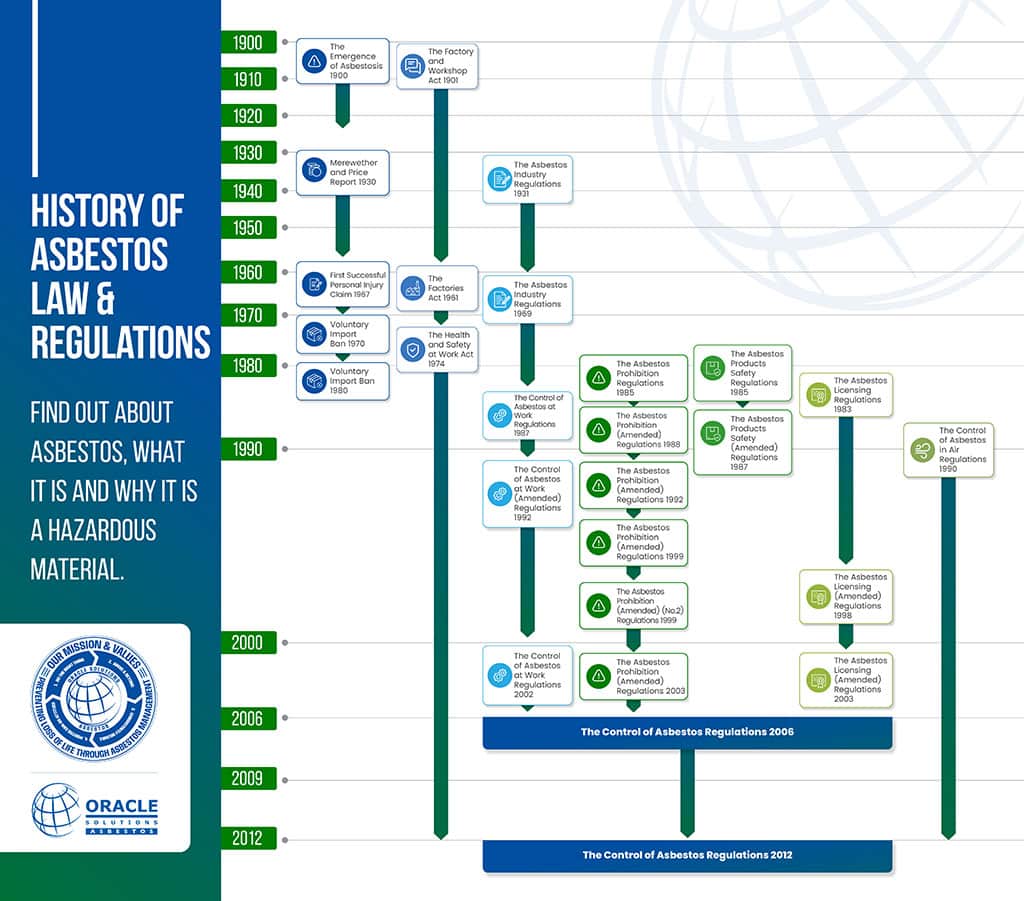

 "There are lots of guarantees around. Here's my simple guarantee: If there's something wrong, we'll fix it."
Jess Scott - CEO
"There are lots of guarantees around. Here's my simple guarantee: If there's something wrong, we'll fix it."
Jess Scott - CEO